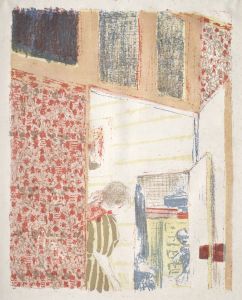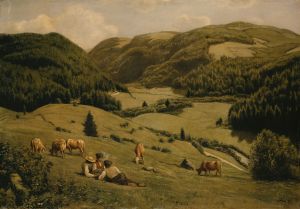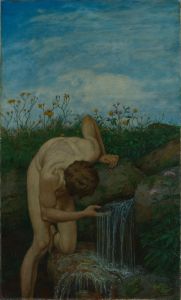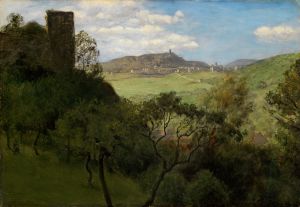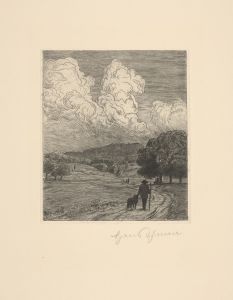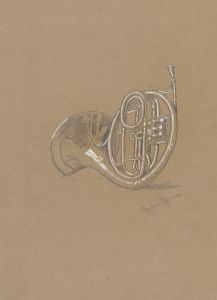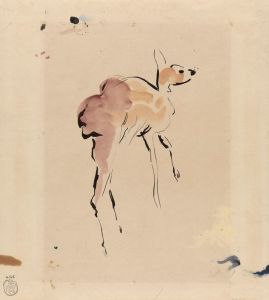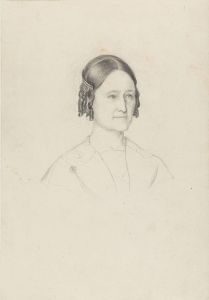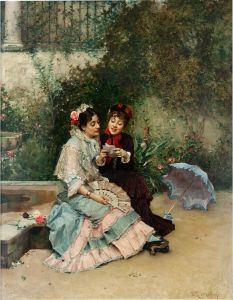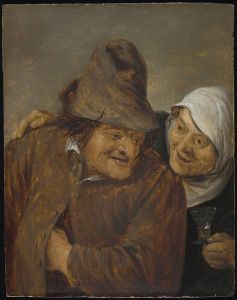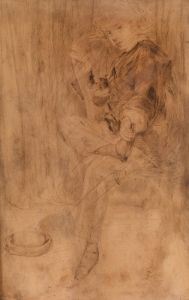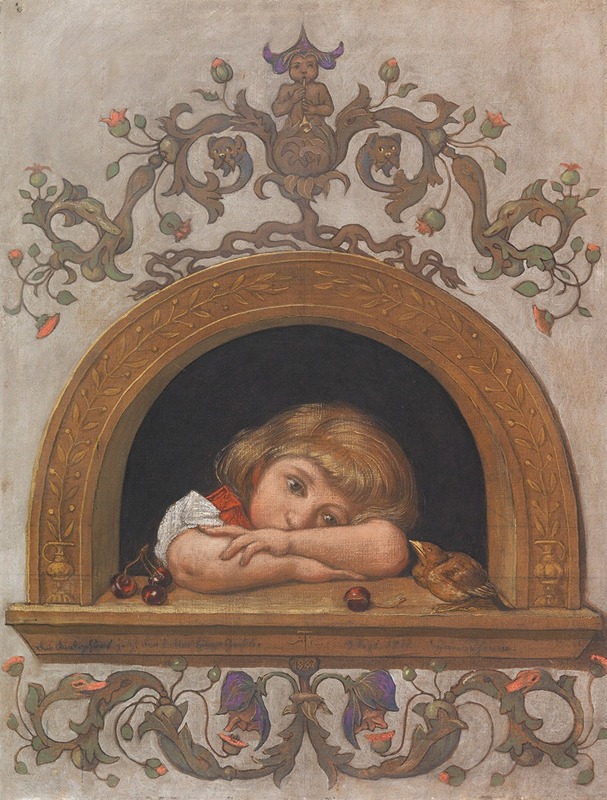
Ella am halbrunden Fenster
A hand-painted replica of Hans Thoma’s masterpiece Ella am halbrunden Fenster, meticulously crafted by professional artists to capture the true essence of the original. Each piece is created with museum-quality canvas and rare mineral pigments, carefully painted by experienced artists with delicate brushstrokes and rich, layered colors to perfectly recreate the texture of the original artwork. Unlike machine-printed reproductions, this hand-painted version brings the painting to life, infused with the artist’s emotions and skill in every stroke. Whether for personal collection or home decoration, it instantly elevates the artistic atmosphere of any space.
Hans Thoma's painting Ella am halbrunden Fenster (translated as "Ella at the Semi-Circular Window") is a work by the German painter Hans Thoma (1839–1924), a prominent figure in 19th-century German art. Thoma is known for his detailed and often idyllic depictions of landscapes, portraits, and scenes from everyday life, as well as his connections to the German Romantic and Symbolist movements.
The painting features a young woman, identified as Ella, seated by a semi-circular window. The composition highlights Thoma's characteristic attention to detail and his ability to capture a serene, introspective mood. The semi-circular window serves as a framing device, drawing the viewer's attention to the subject while also providing a glimpse of the landscape beyond. This interplay between interior and exterior spaces is a recurring theme in Thoma's work, reflecting his interest in the relationship between humans and nature.
Thoma's style is often described as a blend of realism and romanticism, with influences from the German Renaissance and the Nazarene movement. His works frequently incorporate elements of German folklore and rural life, and he was deeply inspired by the natural beauty of his native Black Forest region. While Ella am halbrunden Fenster is not among Thoma's most widely discussed works, it exemplifies his skill in portraiture and his ability to convey a sense of quiet contemplation.
The exact date of the painting's creation is not widely documented, and specific details about the identity of Ella or the circumstances surrounding the work's production are not readily available in historical records. However, the painting is representative of Thoma's broader artistic output during the late 19th and early 20th centuries, a period when he gained significant recognition in Germany and beyond.
Hans Thoma held various prestigious positions during his career, including serving as the director of the Karlsruhe Art Gallery. His work was celebrated for its technical precision and its ability to evoke a sense of nostalgia and connection to the natural world. Today, Thoma's paintings are held in several major collections, particularly in Germany, where his legacy as a key figure in 19th-century art endures.
Due to the limited availability of specific information about Ella am halbrunden Fenster, further research into museum collections or archives may be necessary to provide additional context or details about this particular work.





